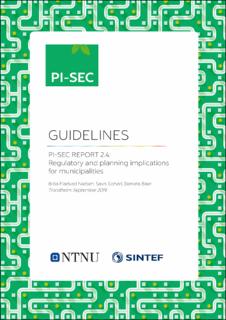| dc.description.abstract | Introduction. When engineering meets pragmatism, challenges arise in terms of how to solve problems. The process of studying how instruments and tools can be improved and developed to integrate energy aspects into urban planning, has from a methodological perspective centered around a basic challenge. The challenge that we have found to be at the core, is that while municipal urban planning is a pragmatic practice working on district or city scale, energy planning is a more direct problem-solving process, based on engineering principles and working at a different scale. Engineers and municipal planners also work at different ends of the timeline. Typically, municipal planners lay out large structures of land use, functions and possibilities in municipal master plans and zoning plans, before handing these over to other stakeholders responsible for technical detailing, property agreements and a multitude of smaller, individual projects. In between the start of a municipal area plan and the realized neighborhood, a range of procedures, political actors, market and legal regulations make the process from plan to reality rather unpredictable.
PI-SEC WP2 is concerned with the needs in municipal planning for realizing smart energy communities, and the results are hence focused on municipal planners as a target group. This means that our recommendations go beyond the ‘building project’ as this is not the core of a municipal planners’ work. Our results emphasize the implications in relation to the pragmatic role of urban planning; a situation where a range of needs and trade-offs must be met in this practice.
The PI-SEC planning wheel (Report 2.2) outlined a new overarching process for understanding how to integrate energy into urban planning. The PI-SEC Planning wheel presents no less than 23 challenges and best practices (A-Z) based on our study of Bergen, Oslo and the municipalities from the research center Zero Emission Neighborhoods that we compared our findings with. Many of the best practices are related to the navigation of multiple stakeholder projects, stakeholder commitment, citizen involvement and differing goals.
The results are based on interviews and workshops with the mentioned municipalities we describe the implications of our findings on municipal planning and regulation.
This PI-SEC report includes 9 implications, that we discuss individually.
As the discussions illustrate, the work to improve our cities and communities will never be finished. The interplay between different stakeholders, objectives, people and time, will keep making integrated planning interesting and full of opportunities. The nine implications therefore suggest new possible research directions for improving municipal planning beyond PI-SEC. | en_US |
